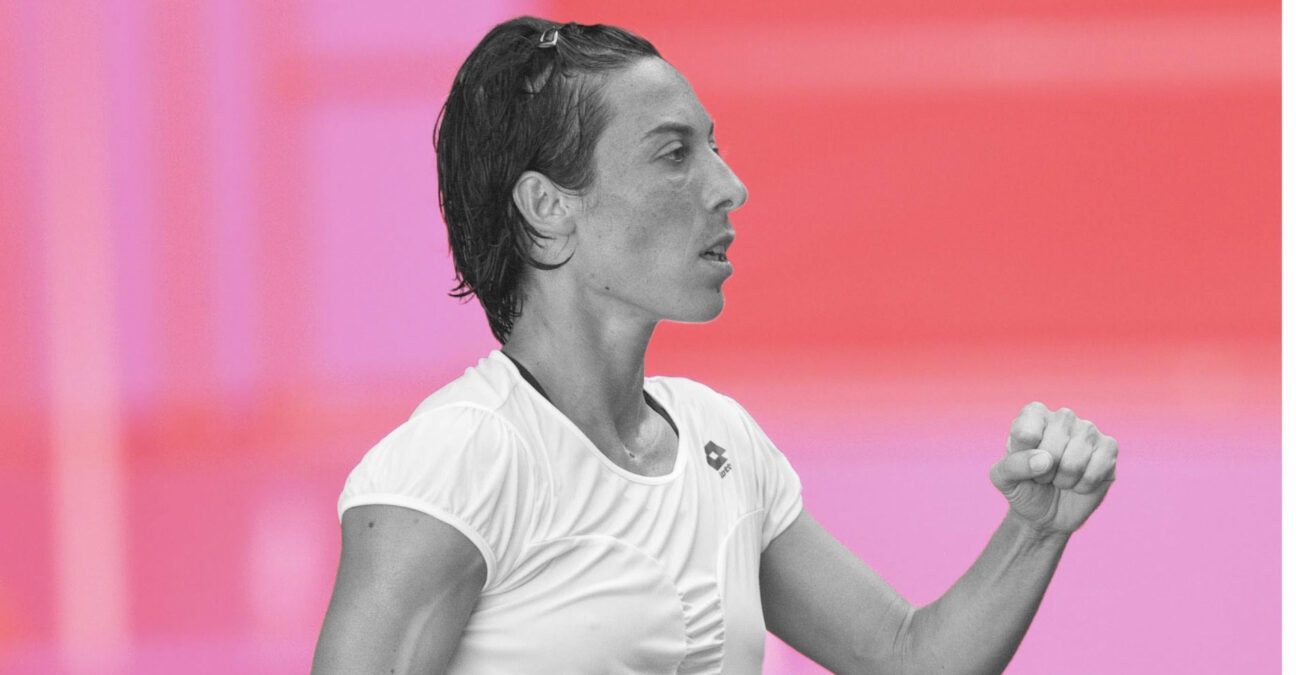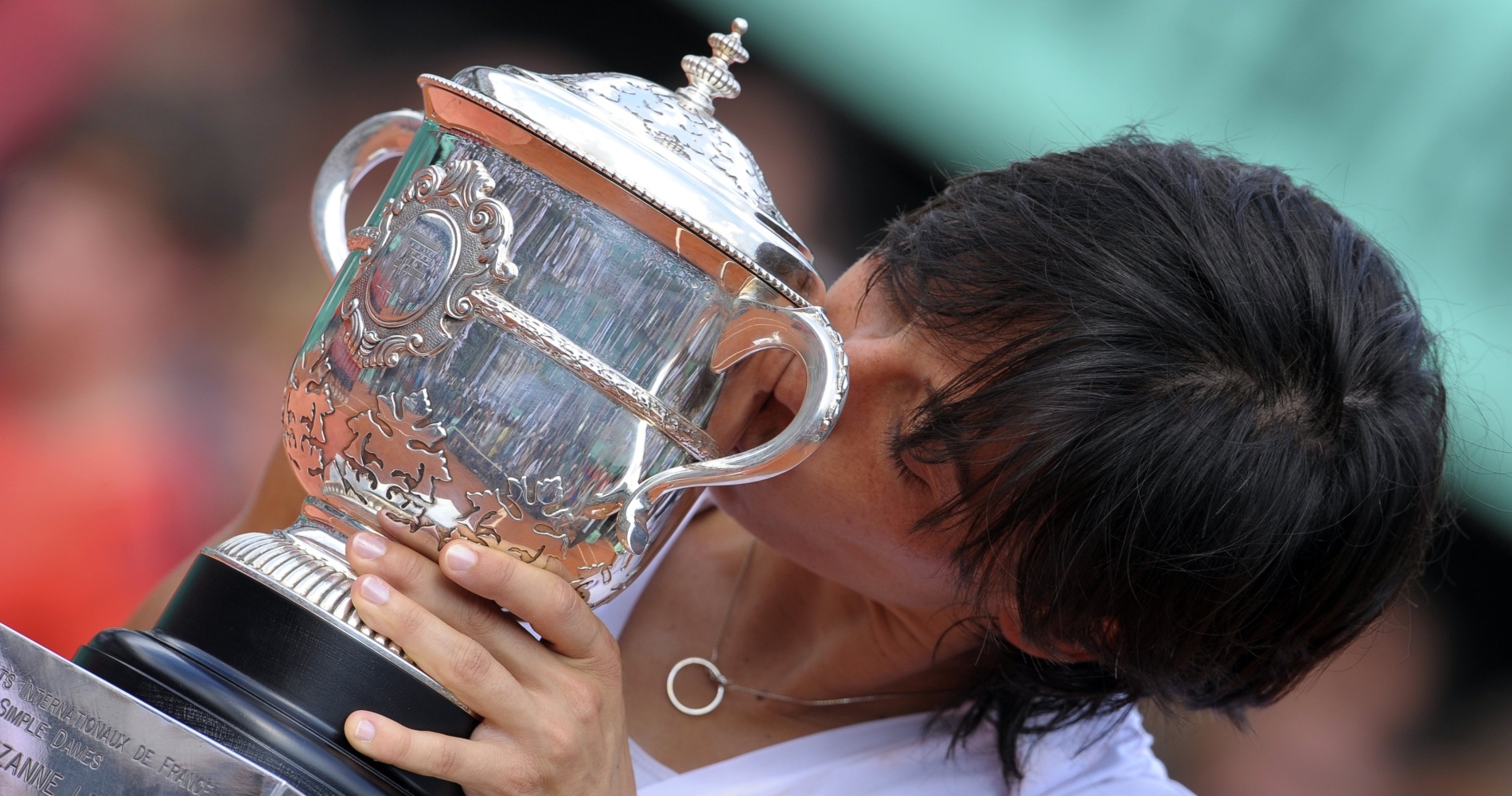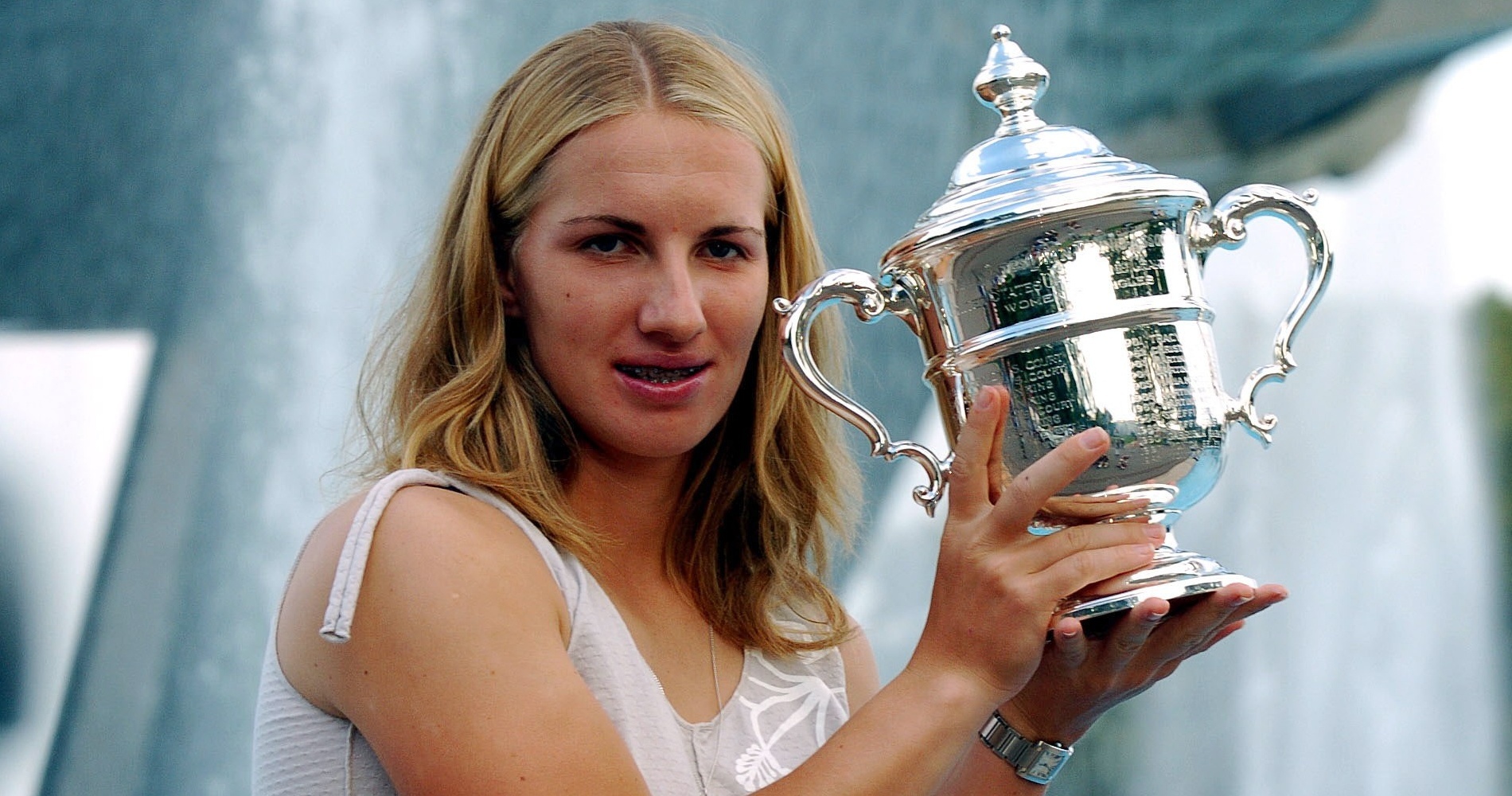January 23, 2011: The day Schiavone and Kuznetsova played the longest women’s Grand Slam match in history
Every day Tennis Majors takes you back in time to celebrate a great moment in tennis history. Today, we go back to 2011 to witness how Francesca Schiavone and Svetlana Kuznetsova set up an all-time Grand Slam record, fighting for four hours and 44 minutes before the Italian finally prevailed (6-4, 1-6, 16-14)
 Francesca Schiavone at the 2011 Australian Open
Francesca Schiavone at the 2011 Australian Open
What happened exactly on the day?
On this day, January 23, 2011, in the Australian Open fourth round, Francesca Schiavone won the longest match in the history of women’s Grand Slam tennis, saving off six match points before prevailing 6-4, 1-6, 16-14 in four hours and 44 minutes against Svetlana Kuznetsova.
The two women erased the previous Grand Slam record (four hours and 19 minutes) set a year earlier by Sandra Zahlavova-Strycova and Regina Kulikova at the 2010 Australian Open.
The players involved: Francesca Schiavone and Svetlana Kuznetsova
- Francesca Schiavone: The Grand Slam champion from Italy
Francesca Schiavone, born in 1980, turned pro in 1998. The Italian entered the top 100 two years later, in 2000, the year she reached her first WTA final, in Tashkent (lost to Iroda Tulyaganova, 6-3, 2-6, 6-3). Her game, featuring a rare one-handed backhand and a lot of variations in pace, didn’t go unnoticed and earned her a good following.
In the following years, she established herself as a solid top 20 player, reaching the Grand Slam quarter-finals three times: at Roland-Garros in 2001 (defeated by Martina Hingis, 6-1, 6-4), at the US Open in 2003 (lost to Jennifer Capriati, 6-1, 6-3), and at Wimbledon in 2009 (eliminated by Elena Dementieva, 6-2, 6-2).

In 2010, the Italian took her career to the next level when, to everyone’s surprise, she triumphed at Roland-Garros after she defeated Samantha Stosur in the final (6-4, 7-6). It was only her fourth career singles title and she became the first Italian female player to ever win a Grand Slam tournament. A few months later, she also reached the quarter-finals at the US Open (defeated by Venus Williams, 7-6 6-4). Thanks to these great results, she finished the year as world No 7.
- Svetlana Kuznetsova: The two-time Grand Slam champion from Russia
Svetlana Kuznetsova, from Russia, was born in 1985 into a sporting family: her mother was a sprint cyclist who had claimed six World Championship titles in the 1970s. Although Svetlana started with cycling, she decided to focus on tennis at the age of 13 and turned pro two years later in 2000. She broke into the top 100 in 2002, the year she claimed her maiden title in Espoo (defeating Denisa Chladkova in the final, 0-6, 6-3, 7-6). She obtained her first breakthrough result in a major tournament at Wimbledon in 2003, when she reached the quarter-finals (defeated by Justine Henin, 6-2, 6-2).

The following year, in 2004, she defeated Elena Dementieva in the second all-Russian final in the history of the Grand Slam (6-3, 7-5), finishing the year as world No 5. After a tough 2005 season, she spent most of the following four years as a top 5 player, accumulating 13 titles and claiming a second Grand Slam, at Roland-Garros, in 2009 (defeating Dinara Safina in the final, 6-4, 6-2). However, since then, her results were rather disappointing and by the end of 2010, her ranking had dropped down to No 27.
The place: Australian Open, Melbourne
Unlike the other Grand Slam tournaments, the Australian Open (first known as the Australasian Championships and, later, the Australian Championships) had moved several locations throughout the years. In fact, the event switched cities every year before it settled in Melbourne in 1972, and no less than five Australian cities had hosted the event at least three times: Melbourne, Sydney, Adelaide, Brisbane and Perth.
The event was held on grass at the Kooyong Stadium, in a posh eastern suburb of Melbourne. Its timing had changed several times as well, between early December and January, going from being the first Grand Slam of the year to being the last.
Until 1982, many of the top players routinely skipped the Australian Open, mainly because of the remote location, and the low prize money but then the dynamics changed. The tournament’s board made big efforts to become as prestigious as the other Grand Slams, which ended up with the event moving to a new location in 1988, in Flinders Park (later known as Melbourne Park), switching from grass to hard courts, and displaying the first-ever center court equipped with a retractable roof. Prize money increased as well, and it wasn’t long before the tournament became the favourite Grand Slam of many players.
The facts
When Francesca Schiavone and Svetlana Kuznetsova met in the quarter-finals of the 2011 Australian Open, tennis enthusiasts knew that the two women could deliver a great performance – they were the winners of the last two Roland-Garros editions. Even though Kuznetsova had been performing far from her previous standards recently, she and her opponent were known for their great fighting spirit: the Russian had notably won a famous marathon against Serena Williams at Roland-Garros in 2009, overcoming an ankle sprain to prevail 7-6, 5-7, 7-5. In this Australian Open, she seemed to be in great shape after having eliminated Justine Henin in the third round (6-4, 7-6).
After Schiavone had won the first set 6-4, and Kuznetsova had taken the second 6-1, it would have been hard to predict that, after a three-hour deciding set, the two women were going to beat the record of the longest match in women’s Grand Slam history! In this incredible scenario, the Russian failed to convert six match points, and the Italian was broken twice while serving for the match. However, in the end, Schiavone prevailed, sealing her victory with style as she finished off her opponent with a winner volley on her third match point.
“It is a fantastic moment for me,” said Schiavone, according to The Guardian.“It is one of the most emotional moments of my life. I just told myself to keep going, do it with the heart and go for it.”
“The match could go either way so many times,” a bitter Kuznetsova said, quoted by The New York Times. “I think it just was really a day of Francesca. We both fight so hard the whole match, and the important moments she just played better. But statistically, I also felt like I was better player on the court. I played better. Just very disappointing.”
Although there had been one longer match on the WTA Tour, the four-hour-and-44-minute marathon won on this day by Francesca Schiavone beat the previous Grand Slam record, owned by Sandra Zahlavova-Strycova and Regina Kulikova and set at the 2010 Australian Open, by a good 25 minutes
The longest matches in each women’s Grand Slam
- Australian Open – 2011, fourth round: Francesca Schiavone defeated Svetlana Kuznetsova in four hours and 44 minutes (6-4, 1-6, 7-6)
- Roland-Garros – 1995, first round: Virginie Buisson defeated Noëlle van Lottum in four hours and seven minutes (6-7, 7-5, 6-2)
- Wimbledon -1995, second round: Chanda Rubin defeated Patricia Hy-Boulais in three hour and 45 minutes (7-6, 6-7, 17-15)
- US Open – 2021, second round: Elise Mertens defeated Rebecca Peterson in three hours and 40 minutes (3-6, 7-6, 7-6), and on the same day, Rebeka Masarova defeated Ana Bogdan, also in three hours and 40 minutes (6-7, 7-6, 7-6).
- The longest match in the history of women’s tennis was played in1984, in Richmond, when Vicki Nelson-Dunbar defeated Jean Hepner in six hours and 31 minutes (6-4, 7-6).
What next? Schiavone and Kuznetsova play another marathon at Roland-Garros in 2015
After this amazing marathon, in the quarter-finals, Francesca Schiavone would find the strength to push Caroline Wozniacki into a third set, but she would finally lose 3-6, 6-3, 6-3. Later in 2011, the Italian would amaze the tennis world again by reaching a second consecutive final at Roland-Garros, but this time, she would be defeated by Li Na (6-4, 7-6). This would, however, remain her last remarkable result before her retirement in 2018.
Svetlana Kuznetsova would never go past the quarter-finals of a Grand Slam tournament again. However, she would manage to claw her way back into the top 10 in 2016.
Four years later, in 2015, in the Roland-Garros second round, the two women would play another marathon, and the Italian would once again prevail (6-7, 7-5, 10-8) after three hours and 50 minutes of play.










